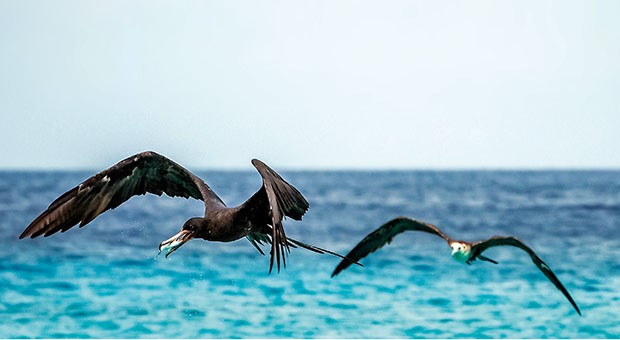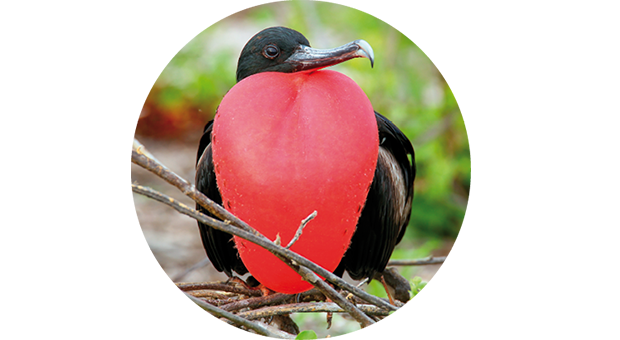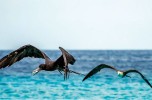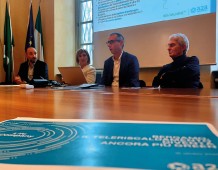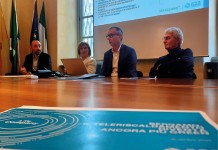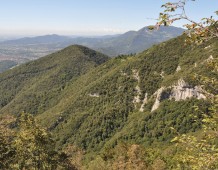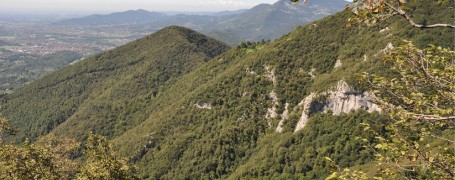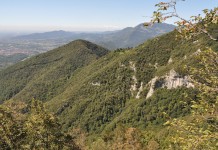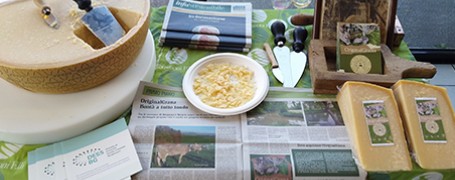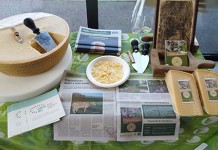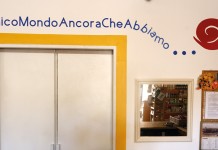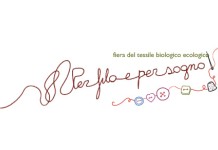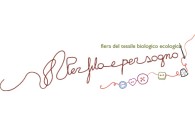Originaria dell’Isola di Natale, è ad altissimo rischio d’estinzione a causa della distruzione del suo habitat
C’era una volta Lydia, un volatile da record. Lydia era mamma da soli sei mesi quando partì per il lungo viaggio che nel 2005 la rese celebre tra gli ornitologi: 4 mila chilometri in volo sul mare, senza mai fermarsi, un percorso lungo 26 giorni che l’ha vista arrivare sino a Sumatra e nel Borneo, superando via terra le montagne e i vulcani di Java, per poi tornare all’isola d’origine. Il suo pulcino, tanto piccolo da non saper ancora volare autonomamente, l’ha aspettata pazientemente al nido, nutrito nel frattempo dal padre. Una storia a lieto fine, quella di Lydia, che ha dell’incredibile: mamma uccello non è mai atterrata per tutta la durata del volo, si è alimentata per lo più in mare aperto, riposandosi sospesa ad altitudini impressionanti, centinaia o addirittura migliaia di metri.
Identikit
Un’impresa non da poco persino per un esemplare di questa specie, conosciuta col nome di “fregata dell’Isola di Natale” o “fregata andrewsi”. La fregata raggiunge massimo il metro di lunghezza, ma ha un'apertura alare di oltre due metri; solitamente non pesa più di un chilo e mezzo, per un rapporto tra apertura alare e peso tra i più alti in natura. La femmina è un po' più grande del maschio. Come per le altre fregate, il piumaggio è quasi interamente nero per entrambi i sessi, fatta eccezione per il collo, bianco-grigiastro sino al petto e nella zona ascellare per le femmine, coperto dalla caratteristica sacca gulare rossa nei maschi. I becchi invece sono rosa nelle femmine e grigi nei maschi. Sulla parte superiore delle ali sono presenti delle bande di colore più chiaro.
Volatili cleptomani
Durante il corteggiamento, come spesso in natura accade, è il maschio a mettersi in mostra, ostentando la sacca gulare rossa e facendola vibrare. A quel punto, è la femmina che sceglie il proprio compagno e con lui forma una coppia monogama per la stagione dell’amore, che cade una volta ogni due anni. Il nido viene costruito unicamente nelle foreste di Christmas Island, al largo dell’Oceano Indiano, in cima agli alberi più alti e al riparo dai predatori. Ogni femmina depone un solo uovo bianco, che viene covato per circa quaranta giorni da entrambi i genitori. I pulcini impiegano circa quindici mesi per diventare autonomi e separarsi da mamma e papà chioccia.
Pressoché incapaci di camminare e di nuotare, le fregate dell’Isola di Natale passano giorni e notti interi a volare in solitaria sull’oceano, raggiungendo anche grandi altezze, così come ha fatto Lydia, che con la sua impresa da record ha sorpreso persino gli esperti. Solo durante il periodo riproduttivo diventano uccelli coloniali e dividono i luoghi di nidificazione con altre specie. Si cibano prevalentemente di pesci – soprattutto dei cosiddetti pesci volanti – meduse, calamari e talvolta di scarti e rifiuti. Quando cacciano, rastrellano la superficie del mare e catturano le prede col becco, evitando così di bagnarsi. Per la caccia, preferiscono acque calde e a basso grado di salinità. Non risultano molto simpatiche quando tormentano opportunisticamente gli altri uccelli per rubare loro il cibo, o peggio ancora, quando predano uova e pulcini altrui. Vittime del loro cleptoparassitismo soprattutto le specie più piccole, come gabbiani e sterne, i quali vengono perseguitati finché costretti a rigurgitare il cibo.
Altre belle storie come quella di Lydia, però, sarà difficile sentirle: la fregata dell’Isola di Natale, infatti, è ad altissimo rischio di estinzione. L’attuale popolazione sembra non superare le 2400 coppie, quindi si stima il declino della specie entro i prossimi trent’anni. Le cause, come sempre, imputabili all’uomo: fondamentalmente la distruzione dell’habitat dell’isola e dei luoghi di nidificazione, che tra le altre cose espone maggiormente gli uccelli ai cicloni tropicali.
Laura Spataro


 Traduzione in inglese a opera di ViceVersa Group
Traduzione in inglese a opera di ViceVersa GroupFly, fly, fly Christmas Frigatebird. Native to Christmas Island it is at extremely high risk of extinction as a result of the destruction of its habitat
Once upon a time there was Lydia, a record flyer. Lydia had been a mother for just six months when she set off on the long journey which made her an ornithological celebrity: 4000 km of flight over the sea without ever stopping, a 26 day long journey which saw her get as far as Sumatra and Borneo across the Java mountains and volcanoes before returning to her island of origin. Her chick, so small that it was still not capable of independent flight, waited patiently for her in the nest, being fed by its father in the meantime.
Lydia’s is a story with a happy ending, with something incredible about it.
Mummy bird never landed for the whole duration of the flight and fed for the most part in the open sea, resting suspended at incredible heights, at hundreds or even thousands of metres of altitude.
Identikit
It is an amazing enterprise even for a bird from this species known as the Christmas Island Frigatebird or Fregata andrewsi. The frigatebird reaches a maximum size of one metre in length but its wing span is over two metres. Usually it weighs no more than one kilo and a half with one of the highest wing span-weight ratios to be found in nature. Females are a little bigger than males. As for other frigatebirds, their plumage is almost entirely black for both sexes except their necks which are whitish-grey as far as their chests and under their wings, in females, but covered by the characteristic red gular sac for males. Beaks are pink for females and grey for males. The upper part of their wings have bands of paler colours.
Kleptomaniac birds
During courting, as often happens in nature, it is the males who put themselves on display, showing off their red gular sacs and making them vibrate. At this point it is females which choose their mates and form a monogamous couple with them for the mating season which takes place every two years. Nests are built exclusively in Christmas Island’s forests, off the Indian Ocean, at the top of the highest trees and protected from predators. Every female lays a single white egg which both parents sit on for around forty days. The chicks take around fifteen months to become independent and separate from their mother and father hens.
Virtually incapable of walking or swimming, Christmas Island frigatebirds pass whole days and nights flying alone across the oceans reaching great heights, just as Lydia did, with her record breaking exploits which took even the experts by surprise. It is only during the reproductive period that they become colony forming and share their nesting places with other species. They feed mainly off fish - above all the so-called flying fish - jellyfish, squid and sometimes waste. When they hunt they comb the surface of the sea and capture prey with their beaks, thus avoiding getting wet. For hunting they prefer warm and relatively unsalty waters. They have the rather unfriendly habit of taking advantage of other birds to rob their food or, even worse, prey on their eggs and chicks. Victims of their kleptoparasitism are above all smaller birds such as gulls and terns who are persecuted until they regurgitate their food.
Stories as attractive as Lydia’s are, however, difficult to find. The Christmas Island Frigatebird is, in fact, at extremely high risk of extinction. The current population would seem to be no more than 2,400 pairs and the species is thus expected to disappear within thirty years. The cause, as always, is man whose destruction of the island and its nesting places also exposes birds to tropical storms.




